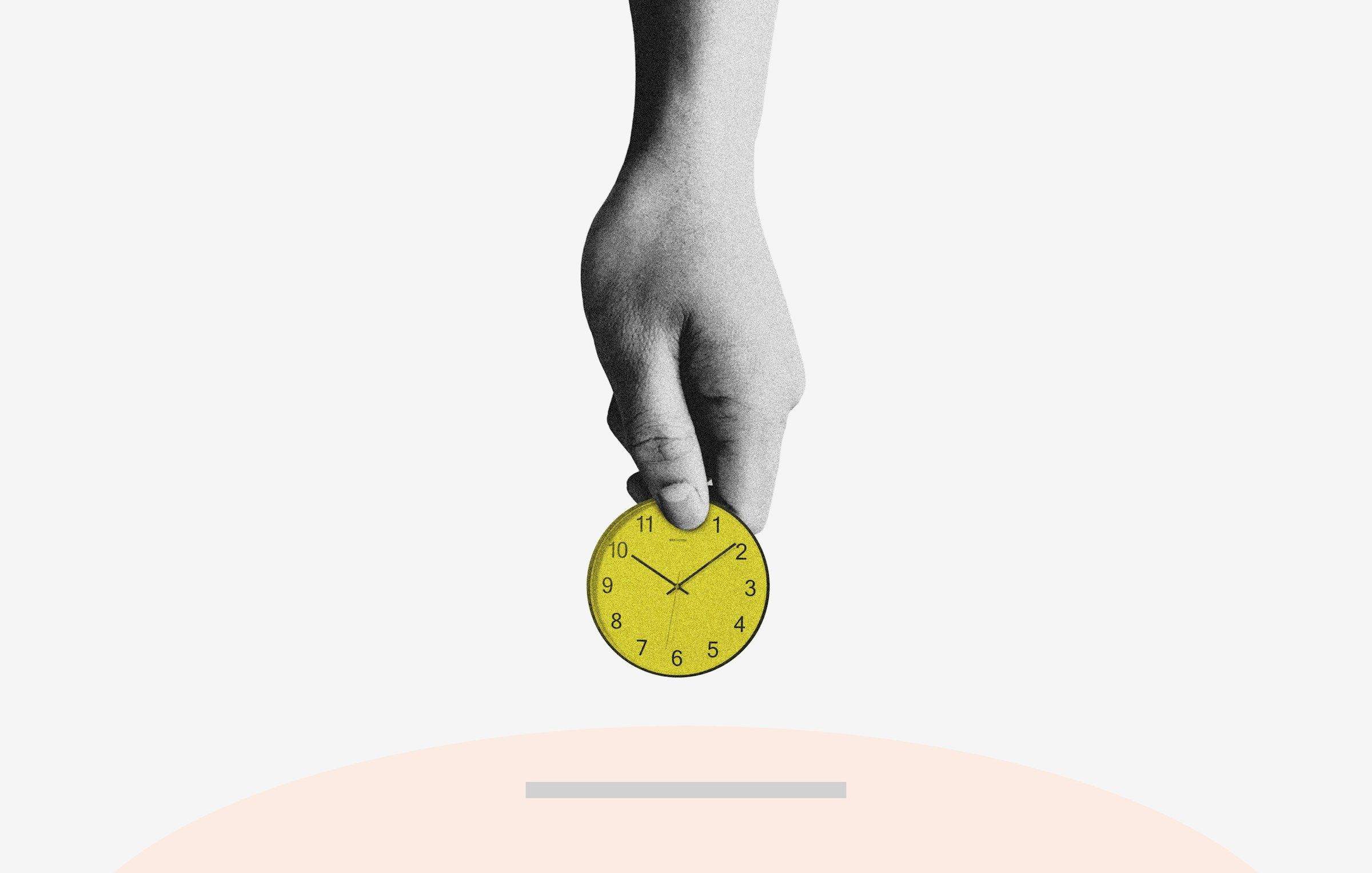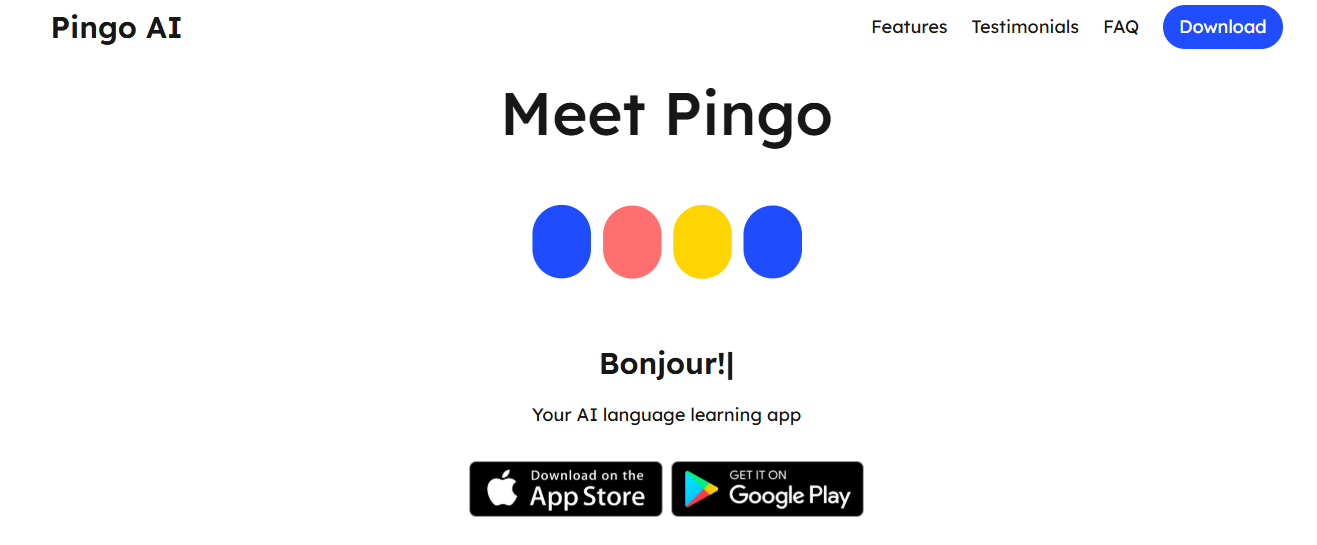How Long Does It Take To Learn Polish? Realistic Timelines and Speed-Up Tips

Michael Xing, Founder of Pingo AI
Trying to learn Polish while holding down a job or planning a move can feel like running uphill, and many people ask the same question: How long will it take to hold a conversation, pass a language exam, or reach fluency? This article outlines practical milestones for speaking, listening, reading, and writing, and provides proven speed-up tips, including focused vocabulary practice, immersion tactics, and regular speaking drills. Ready to set a plan you can stick with?
If you are ready, Pingo AI’s language learning app offers an easy-to-use app that creates concise daily lessons, provides straightforward speaking feedback, and outlines a clear study schedule to help you learn Polish more efficiently and achieve your milestones.
Summary
- Focused, speaking-first practice compresses timelines far more than passive study, with expert benchmarks clustering around 1,000 hours for high-level competence and only about 5% of learners reaching deep fluency without focused speaking and feedback.
- Frequency and intensity matter: 30 minutes of focused speaking every weekday equals 2.5 hours per week and stretches a 1,100-hour estimate into roughly 8.5 years, while one hour of daily deliberate conversation can compress similar targets to about 3 years.
- Structured micro-practice lifts plateaus, as seen when a six-week commuter microcourse doubled attendance from two sessions to four and resolved targeted mistakes within three weeks during follow-up drills.
- Real input and consolidation are available and necessary, as approximately 50 million people speak Polish. The Foreign Service Institute guidance places Polish in Category III, making sleep-based consolidation and spaced rehearsal essential for retention.
- Reducing administrative friction is crucial because automating routine steps can cut processing time by up to 50%, and streamlining workflows can increase productivity by about 30%, freeing up more time for high-quality speaking and correction.
- Measureable, short-cycle remediation accelerates gains: track three simple metrics, aim to cut recurring-error incidence by one third within three weeks, or to double uninterrupted speaking time in the same window to confirm you are converting exposure into usable speech.
- This is where Pingo AI's AI language learning app fits in, addressing these gaps by providing conversation-first simulated dialogues and immediate corrective feedback to shorten the gap between recognition and usable speech.
Is Polish Hard to Learn?

Polish is unquestionably more challenging than many Romance or Germanic languages for an English speaker. Still, it is learnable on a realistic timetable if you make speaking practice the engine of your progress. With deliberate, daily conversational work and targeted feedback, travel-level confidence can be achieved in weeks, and workplace fluency can be attained in months, rather than years of passive study.
Why Does the Difficulty Feel So Dense?
The hard part is not a single rule; it is cumulative cognitive load: many unfamiliar patterns pile up at once, then interact unpredictably. That creates a learning problem that appears chaotic, not one that can be solved by simply repeating flashcards. You need to reduce that load by narrowing your scope and practicing the same small set of real-world phrases until the grammar and sounds become attached to actions, not abstract rules.
When Do Learners Hit the Worst Bottlenecks?
When we ran a 12-week speaking lab focused on everyday scenarios, the same pattern appeared: learners made fast gains in survival conversations, then plateaued on accuracy when they tried to force native-level correctness. This maps to measurable frustration; about 40% of learners find Polish grammar challenging, which aligns with my observations—grammar becomes a barrier when study is passive or fragmented rather than applied in speech.
Most People Study Polish the Familiar Way, But That Approach Has a Hidden Cost
Most learners depend on passive drills and vocabulary lists because they feel efficient and fit busy schedules. That method works early, but as you try to use the language, gaps explode: words you know disappear under pressure, and you lose conversational confidence.
Platforms like Pingo AI offer low-pressure, native-sounding conversations and instant corrective feedback, which reduces the gap between recognition and usable speech, and turns wasted hours of passive review into minutes of practical rehearsal.
How Should You Redirect Effort to Get the Fastest, Least Painful Progress?
If you have limited weekly time, prioritize repeated spoken scenarios tied to a small, high-frequency wordlist, and then expand outward. Use short daily speaking sessions to build procedural memory, add targeted drills for the specific patterns that trip you up, and layer spaced repetition for forms that require explicit recall.
Optimization with Explicit Constraints
Treat pronunciation and rhythm like motor skills to train, not optional polishing. Also, remember that Polish is a living language with plenty of practice partners, since about 50 million speakers speak it, so opportunities to use real input exist if you seek them. That simple strategy changes how quickly frustration turns into usable ability, and it’s why a speaking-first regimen beats scattershot app routines every time.
The part that surprises almost everyone, though, is what happens after you push past that first plateau.
Related Reading
- How To Learn A Language Fast
- How Hard Is It To Learn Turkish
- Is Polish Hard To Learn
- Is Portuguese Hard To Learn
- Can You Learn A Language By Watching TV
- What Is The Easiest Language To Learn In The World
- Is Russian A Hard Language To Learn
- Is Vietnamese A Hard Language To Learn
- Is French Or Italian Easier To Learn
- How Long Does It Take To Learn Polish
- How Long Would It Take To Learn Italian
How Long Does It Take To Learn Polish?

Realistically, how long it takes to learn Polish depends more on what you do with each hour than the raw hour count. For serious, high-level competence, most learners plan for roughly 1,000 hours, while only a small fraction, about 5% of learners, reach deep fluency without focused speaking and feedback.
What Changes the Calendar More Than Total Hours?
The gap between someone who grinds through exercises and someone who actually speaks comes down to three levers: the proportion of time spent talking, the quality of corrective feedback, and how deliberately you cycle complex patterns into practice. This pattern appears across classrooms and self-study settings: two people can log identical hours, but the one who spends the bulk of that time in coached conversation makes far larger gains.
How Do You Convert Target Hours Into a Usable Plan?
Think in blocks, not vague intentions. Pick a weekly speaking quota, then stack short, repeatable scenarios until the grammar becomes procedural. For example, scheduling four 30-minute focused conversation sessions a week produces a different skill curve than one long passive study block of the same length, because speaking forces retrieval and error correction under pressure.
What Breaks in the Usual Approach?
Most learners default to passive drills because they are comfortable with them. That choice works at the start, but as complexity rises, recognition fails under conversational stress and progress stalls. Platforms like AI language learning apps mimic low-pressure, native-sounding conversation and deliver instant, actionable feedback, which reduces wasted hours and turns rehearsed phrases into usable speech.
What Specific Practices Speed Progress?
Use short, intense speaking sprints where you repeat the same functional scenarios until you can do them without thinking, then do targeted correction cycles the next day. Treat pronunciation and case endings as motor skills: drill them into automaticity with dialogue shadowing and immediate corrections.
Weekly Error Audits
Schedule "error audits" each week, a 15-minute session where you isolate three recurring mistakes and practice lines that force correct forms until they land. Picture it like learning a song, where you practice a difficult bar until your fingers never miss it, then play the whole piece—that motor memory is the engine of fluency.
Mindset and Plateaus
A learner's mindset matters as much as their technique. The standard emotional pattern I observe is steady persistence paired with occasional frustration when plateaus appear; changing practice structure, rather than adding hours, is the reliable lever to escape those plateaus.
Expressive AI for Realistic Dialogue
Pingo's AI language learning app is redefining language learning through conversation-first practice powered by expressive AI, letting learners rehearse realistic dialogues and get instant, practical feedback. With adaptive correction, personalized exercises, and two modes for beginners and advanced learners, Pingo makes speaking practice feel natural and helps you hit real milestones faster.
That tidy plan looks promising, but there is one scheduling choice that quietly decides whether your progress accelerates or stalls.
Timeline to Achieve Fluency in Polish

Fluency in Polish is not a single date on a calendar; it’s a function of how many high-quality speaking hours you log and how concentrated those hours are. Expert estimates cluster around about a thousand hours of active use, and those totals only matter once you translate them into your weekly routine.
How Long Will That Feel on Your Calendar?
If you commit to 30 minutes of focused speaking practice every weekday, you are dedicating 2.5 hours a week to active production, which translates to roughly 1100 hours of steady work over 8.5 years. Push that to one hour of deliberate conversation practice daily, and the exact estimate compresses to about three years.
These are rough calculations, but they illustrate the basic math: frequency and intensity significantly outweigh raw study time.
What Changes When You Concentrate Your Hours?
A single month of immersion with six hours a day of speaking practice delivers roughly 180 hours of deliberate use, which can buy you half a year of measurable, functional gains if feedback is immediate and targeted. The constraint is human: sustained high-intensity speaking produces fatigue, and without corrective input, those hours reinforce mistakes.
That tradeoff explains why some intensive programs initially feel fast, then slow down as you chase accuracy.
Who Actually Makes the Fastest Gains?
This pattern appears across classroom learners and solo students: those who mix high-volume speaking with immediate correction make steeper progress. Many learners struggle not because they lack vocabulary, but because they cannot place words into context under pressure. It is exhausting when you can recognize a word in a text but fail to produce it in a real conversation, and that mismatch is the single biggest drag on calendar estimates.
Most People Still Follow the Familiar Path, and It Costs Time
Most learners rely on passive drills and textbook cycles because they fit into busy lives. That approach works well initially, but as complexity increases, progress becomes fragmented: grammar irregularities and case endings emerge under conversational stress, conversations stall, and motivation erodes.
Platforms like Pingo AI offer low-pressure, native-sounding simulated conversations and instant corrective feedback, which reduces the time wasted repeating mistakes and keeps speaking practice consistent and restorative, rather than demoralizing.
How Should You Convert a Target Into a Plan You Will Keep?
Set a speaking quota in hours per week and defend it like a meeting on your calendar, then design micro-goals inside each session. For example, three 40-minute scenario rehearsals and two 15-minute focused correction blocks per week deliver both production and immediate repair.
Track recurring errors weekly, isolate the one pattern that breaks you, and force that pattern into every role-play until it works under pressure. That blend shortens the effective hours required because quality improves, not just quantity.
Fluency as Tuning a Radio
Think of fluency as tuning a crowded radio: each practice session nudges the dial. When you tune with focused listening, targeted correction, and repeated minor adjustments, stations come in clearly much sooner than if you simply turn the knob and walk away. That simple math raises a sharper question about personal constraints that most plans ignore.
What Affects How Long It Takes to Learn Polish?

Speed depends less on a single variable and more on how several tight constraints interact: working memory and sleep-based consolidation, the specificity of your goals and feedback, and the match between practice tasks and real conversational demands. Change any one of those, and you either multiply effective hours or waste them; that is what ultimately stretches a calendar from months into years.
How Does Memory Retention and Sleep Change the Pace?
Sleep and spacing are not optional tuning knobs; they are the engine that turns practice into stable ability. When you cram grammar rules without nightly consolidation, new forms float away under pressure; spaced, post-sleep rehearsal cements forms so you can retrieve them in real talk.
Medium Difficulty and Consolidation
The Foreign Service Institute classification, which labels Polish as a Category III language, meaning it is considered of medium difficulty for English speakers, in 2024, helps explain why consolidation matters more here than in easier languages, because more novel patterns must be stored in long-term memory.
What Role Do Precise Goals and Feedback Play?
When we redesigned a six-week commuter microcourse, we asked each learner to pick one concrete speaking target, and attendance rose from two sessions a week to four, with targeted mistakes resolving within three weeks. That pattern shows how goal clarity converts vague effort into measurable gains, because it focuses corrective feedback on the small number of forms that actually break you.
If your feedback is anonymous or delayed, you tend to repeat the same errors; if it is immediate and tied to a specific goal, you can quickly rewire production.
What Breaks in Common Practice as Complexity Grows?
Most learners default to patchwork routines because they feel manageable. That works early, but the hidden cost appears as you move past survival phrases: errors become entrenched, confidence collapses under pressure, and motivation bleeds away.
Solutions like the AI language learning app offer continuous spoken correction and scaffolded role-play, providing users with immediate, contextual feedback that prevents hours of wasted repetition and keeps progress steady, rather than stopping and starting.
Why Do External Constraints Shift the Timeline So Much?
Age, cognitive load from work or study, social anxiety, and permission to make mistakes each change the efficiency of a study hour. A tired commuter engaging in passive listening is not the same as a rested learner engaging in focused spoken drills; the former saps retention, while the latter builds usable skills.
The emotional cost matters too, because frustration from being stuck in conversation reduces practice frequency; the faster you remove that emotional friction, the more high-quality hours you can sustain.
How Should You Treat Planning Numbers So They Help, Not Paralyze?
Use benchmarks as planning anchors, not fate. For example, Preply Blog's 1,000-hour estimate from 2025 provides many learners with a concrete, cumulative target for functional competence. Still, its practical value lies in translating it into weekly, goal-focused speaking quotas and recovery periods.
Think in rhythms you can keep for months, not heroic bursts you cannot sustain, because consistency with targeted correction beats raw hours without direction.
Pingo Status Quo Three-Step Moment
Most learners stitch together apps, textbooks, and intermittent tutors because that mix is familiar and fits busy lives. That familiar approach fragments corrective feedback, so errors recycle and progress stalls as grammar interactions compound.
Platforms such as AI language learning apps provide always-available, native-sounding practice with instant, actionable correction and scenario sequencing, which prevents repeated mistakes and preserves momentum as complexity rises.
Pronunciation, Transfer, and Habit Mechanics in One Image
Learning Polish sounds is like reprogramming a muscle memory: you need short, exact repetitions under realistic timing until the motor pattern feels automatic. When that happens, you stop thinking about endings and start using language as a tool. Treat pronunciation drills as physical training, not optional polishing, and build micro-habits around immediate feedback and short, daily execution windows.
Conversation-First Practice with Expressive AI
Pingo's AI language learning app is redefining language learning through conversation-first practice powered by expressive AI. Instead of memorizing flashcards or repeating phrases, learners engage in immersive, real-world dialogue, from ordering food abroad to making new friends.
Adaptive Learning for Faster Mastery
With adaptive feedback, personalized exercises, and two unique modes for both beginners and advanced learners, Pingo AI makes mastering a new language feel natural and fun. Whether your goal is fluency, confidence, or daily speaking practice, Pingo helps you get there faster. Start speaking with Pingo today for free and discover how easy it is to learn a language by talking.
There is one tactical lever that quietly decides whether a plan accelerates or stalls, and it is more surprising than you think.
Related Reading
- Best Programs To Learn Japanese
- Types Of English Language Courses
- Best Program To Learn Russian
- Best Ways To Learn English
- What Is The Best Language To Learn
- Is Italian A Hard Language To Learn
- Is Dutch Hard To Learn
- Is Chinese A Hard Language To Learn
- Best App To Learn Portuguese
- Best App To Learn Polish
- Is Arabic Hard To Learn
- Best Books To Learn German
- Best Ways To Learn Italian
- How Long Does It Take To Learn Dutch
- Best Program To Learn Spanish
How to Speed Up the Process

Make practice an experiment: set a single micro-goal for each session, force production under pressure, get immediate correction, and repeat that cycle daily until the error stops reappearing. Do that and you compress months of passive review into weeks of usable ability.
How Should You Structure a Single Fast-Learning Session?
Start with a two-minute cold recall of the exact phrase or function you want to own, then spend 10 minutes producing against a realistic constraint, and finish with five minutes of focused repair on the one pattern that failed.
This structure facilitates retrieval, creates mild stress that speeds up encoding, and closes the loop with specific correction, ensuring the brain does not simply rehearse the same mistake. Treat the session like a physics lab: one hypothesis, one test, one measurement, then adjust.
What Do You Force into Production So That Progress Generalizes?
Use variability, not repetition alone. If you want to internalise a complex verb form or a social routine, practice it across three different contexts in the same session, then switch to a contrasting form for two minutes. That interleaving trains retrieval under shifting cues so your brain learns the rule, not the context.
Picture it like hitting golf shots from different lies; the movement becomes robust because you learn to adapt, rather than copying a single perfect swing.
How Do Mistakes Become Fuel Instead of Failure?
Map recurring errors and assign a simple remediation recipe to each one. For one week, isolate the worst mistake and create ten tiny drills that force that exact correction. Then, measure success by uninterrupted speaking time or by the percentage of turns needing a repeat. This turns vague frustration into a clinical process:
- Diagnose
- Expose
- Correct
- Retest
In my work with time-crunched learners over an eight-week sprint, those who embraced this “error map” stopped freezing mid-sentence within three weeks and reported steadier confidence.
Most learners follow a patchwork routine because it fits their schedule, and that familiarity works early on. The hidden cost manifests as sessions fragment and errors recur across weeks, so you spend hours replaying the same problems without a lasting repair.
Automated Corrective Cycles
Solutions like Pingo AI centralize scenario sequencing, deliver instant corrective feedback, and automate practice progression, so your corrective cycles become shorter and more consistent, keeping momentum instead of letting mistakes fossilize.
Why Does Removing Friction Matter So Much for Speed?
Administrative and logistic overhead silently eats your practice time. Automating routine steps can reduce setup and processing time by up to 50%, freeing up more time for focused production and correction, and minimizing the need to revisit exercises and cataloging. When setup and feedback are fast and predictable, the quality of each hour rises sharply.
How Do You Sustain High-Quality Practice in a Busy Life?
Turn practice into a simple, repeatable workflow and defend it like a meeting would be defended. Pick three short anchors each day, streamline the tools and prompts you use, and audit the flow weekly. Streamlined workflows free cognitive space, and according to streamlining workflows, can increase productivity by 30%; that kind of trimming yields measurable gains in usable output.
In concrete terms, fewer clicks and more straightforward prompts mean more uninterrupted minutes of speaking and faster correction cycles.
What Should You Measure to Know You Are Actually Faster?
Track three simple metrics: uninterrupted speaking seconds per minute, recurring-error incidence per 100 utterances, and the number of successful turns without prompting. Aim to cut your recurring-error incidence by a third within three weeks, or to double your uninterrupted speaking time in the same window.
Those metrics reveal whether you are merely accumulating exposure or actually converting exposure into fluent use. This shortcut appears promising until you attempt to scale it without the proper structure, at which point everything either accelerates or quietly stalls.
Start Learning A Language with Pingo for Free Today

When gamified drills leave you with a streak but no usable speech, switch to conversation-first rehearsal that forces real turns, provides instant correction, and builds short, repeatable speaking habits. Try Pingo AI for free to see whether it moves your speaking needle.
Over 1 million users have started learning a language with Pingo, and 90% of users report improved language skills within three months, making it a program worth exploring for consistent progress.
Related Reading
- Best Online French Course
- How To Learn Brazilian Portuguese
- Best Way To Learn Vietnamese
- Best Apps To Learn Dutch
- Best Online Arabic Courses
- Best Chinese Language Learning App
- Best French Language Books
- Best YouTube Channels To Learn Spanish
- Best Way To Learn Korean Online
- Best Portuguese Language Course
- Best App To Learn Turkish
- Best Way To Learn Turkish